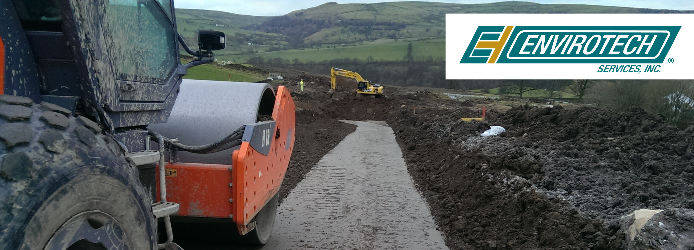
Investing in high quality soil stabilization is the first step to building quality roads that can endure extreme weather and heavy use.
Before starting a soil stabilization program, it is important to understand some of the key soil properties, like density, plasticity, as well as compressibility and permeability, because they provide insight into the current state of the soil.
Increasing Soil Density
-
- Additionally, the soil stabilization process focuses on increases soil density to lessen the chance of creating voids which can compromise the roads durability. Voids can trap moisture and air which can cause the road to become less stable and even disintegrate when faced with heavy use or extreme weather conditions (The Basic Road Stabilization Process).
Reducing Soil Plasticity
-
- Soil plasticity is the soils ability to undergo deformation without cracking or crumbling. Reducing soil plasticity allows for the soil to become easily pulverized and have less affinity with water which makes it more desirable to work with for stabilization work (Soil Stabilization…).
Decreasing Compressibility / Permeability through Compaction
-
- The goal of compacting soil is to expel excess air without significantly changing the amount of water in the soil mass (Gresser). “Since the amount of air is reduced without change in the amount of water in the soil mass, the degree of saturation (the ratio of the volume of water to the combined volume of air and water) increases” (Gresser). Compacting soil decreases compressibility and permeability which increases the soil’s overall strength.
These are just some of the key properties to test for when implementing a soil stabilization program. It is important to be as thorough as possible before starting treatment.
The soil stabilization process is typically started by gathering and testing soil samples to gain an understanding of the current condition of the soil. Once the initial test of the base soil is done, a ‘trial run’ is done by adding a recommended additive to the sample. Another test is then conducted to see if the additive produced desired results.
Once an additive is selected, typically the next step is crushing the existing soil into fine particles. Base materials and aggregate are added after the soil is pulverized. After making sure the soil content is at the optimal moisture level, additives are applied, either dry or through a spray method (The Basic Road Stabilization Process). EnviroTech Services, Inc.'s BaseBind® is a versatile road stabilization additive that can be mixed into a variety of road bases, like recycled asphalt, or can be applied topically. BaseBind extensive field testing demonstrates its ability to increase the longevity of roads, while decreasing operation expenses. After additive has been mixed, a stabilizing machine passes over the soil several times to ensure the additive is applied evenly throughout the soil (The Basic Road Stabilization Process). Mixing procedure varies based on the soil condition and the additive being used. Now, the compaction process can begin to make the surface smooth and ensure optimal moisture levels (The Basic Road Stabilization Process).
After additive has been mixed, a stabilizing machine passes over the soil several times to ensure the additive is applied evenly throughout the soil (The Basic Road Stabilization Process). Mixing procedure varies based on the soil condition and the additive being used. Now, the compaction process can begin to make the surface smooth and ensure optimal moisture levels (The Basic Road Stabilization Process).
The last step in the soil stabilization process is curing which can last seven to twenty-eight days. Curing can “result in overall enhancement of the soil matrix with swell reduction, shear strength improvement and resistance to influence of wetting and drying” (The Basic Road Stabilization Process).
Now, your soil is ready to support a durable and long-lasting road!
To learn more about the soil stabilization process or soil stabilization products, please visit the EnviroTech Services, Inc. website or speak with a representative at 800-369-3878.
Similar Reads:
- Maintenance and Preservation of Gravel Roads
- Dust Control Decision Making: Calcium Chloride vs Magnesium Chloride
- Total Cost of Ownership: Benefits of Dust Control Verse Gravel Replacement
Works Cited
“The Basic Road Stabilization Process | Global Road Technology.” GRT, 17 Aug. 2014, globalroadtechnology.com/the-basic-road-stabilization-process/. Accessed 17 Feb. 2021.
Gresser, Charles. SOIL COMPACTION and STABILITY. Accessed 17 Feb. 2021
“Soil Stabilization: Principles, Effects, and Its Techniques [with Calculations].” Soil Management India, 16 May 2018, www.soilmanagementindia.com/soil-stabilization/soil-stabilization-principles-effects-and-its-techniques-with-calculations/16550. Accessed 17 Feb. 2021.

